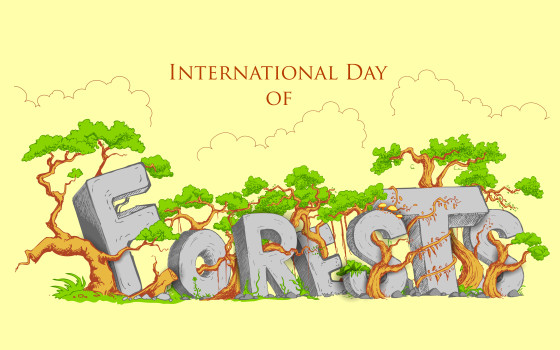When prince Ram — accompanied by Sita and Lakshman — was set for the 14 year old exile, his mother Kaushalya could not help but break into emotions. As she lovingly embraces her son, her worries sally forth, “How will you live in those dangerous forests my son, how will you manage with Sita and Lakshman? There are dangerous beasts, and unseen powers, the trees are dense, and there is little light, it is not a hospitable place, how will  you, who have been raised with all the luxuries of life be able to cope in such a harsh and unforgiving place? How will you live in the aranya, my dear son?”
you, who have been raised with all the luxuries of life be able to cope in such a harsh and unforgiving place? How will you live in the aranya, my dear son?”
Queen Kaushalya’s words while are laced with emotions, offer us a little insight on how the foliage was in the ancient times, and how our perspective were about the wilderness. Forests or Aranya, as they were called, were places of wilderness, stretching into the unknown. Outside the towns and cities, stretched these forests, in them lived the Rishis seeking enlightenment or Sanyasis seeking truth after living a material life. The forests were thus a dense cosmic unknown that could envelop you and enlighten you.
From a situation where forests abounded to one today, where the very forests are struggling for survival, it has been a sad story for foliage in India. The pressure of population, in terms of housing, or requirement of natural resources, forests are fast being destroyed in the name of progress. India happens to be one the rare bio-diverse zones, blessed with more than 50, 000 species of plants and 40,000 species of animals.
Here are some interesting facts about India’s flora & fauna:
-
The forest cover of India is assessed as 69.2 million hectares or 21.1% of the country’s geographical area
-
2% of global landmass, yet India possesses 8% of world’s biodiversity
-
16 types of forests, from tropical rain fed to deciduous types
-
597 Protected Areas comprising 95 National Parks, 500 Wildlife Sanctuaries, 2 conservation reserves covering 1.56 million ha area or approx. 4.75% geographical area of the nation
-
15000 species of flowering plants in India
-
33% of plant species are endemic to India, found nowhere else
-
50,000 varieties of rice in India, making it the biggest reservoir of rice on earth
-
11% of plant biodiversity in the world is found in India
-
423 species of mammals found in India, of which 44 are endemic to India like the Nilgiri Tahr, Wild Ass, and the Lion
 tailed Macaque
tailed Macaque -
1331 species of birds live in the country, of which 55 species of birds are endemic
-
408 species of reptiles inhabit India, of which 187 are endemic
-
Many species of animals in India have gone extinct over the past century and more, like the cheetah, The Indian Aurochs, Sumatran Rhinoceros, and the Himalayan Mountain Quail.
While the condition of forests in India is dour and sad, there are a few inspiring stories coming out as well, like the one about a person in North East, Jadav Payeng, who has planted a forest by himself
Or how Shubhendu Sharma from Afforestt has been growing forests in the urban landscape.
Forests, while they may not be as dangerous as they were in the times of Ram or Sita, they only as much and more necessary in modern age. Considering our dependency on monsoon, and ground water, the necessity of forest can never be overstated. Let’s save ever inch and every cm of this wonderful heritage, else, there’d be nothing worth saving about.










Recent Comments